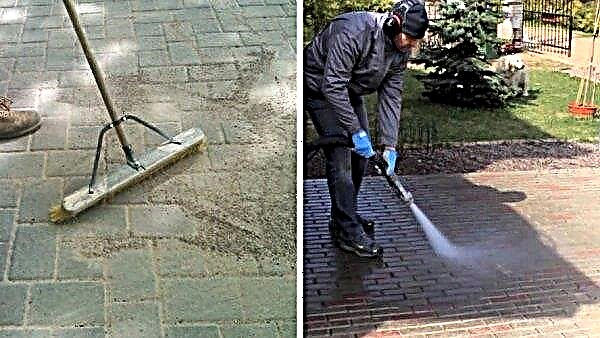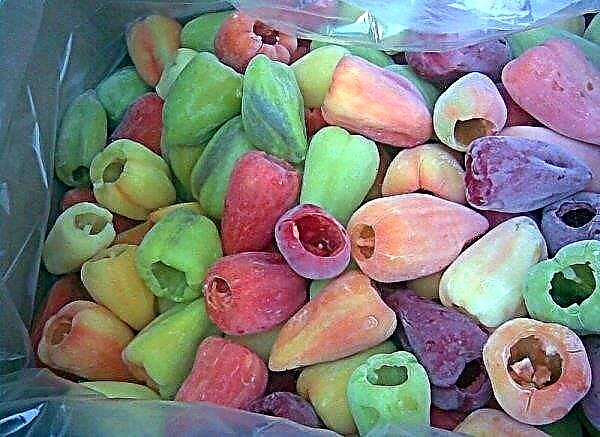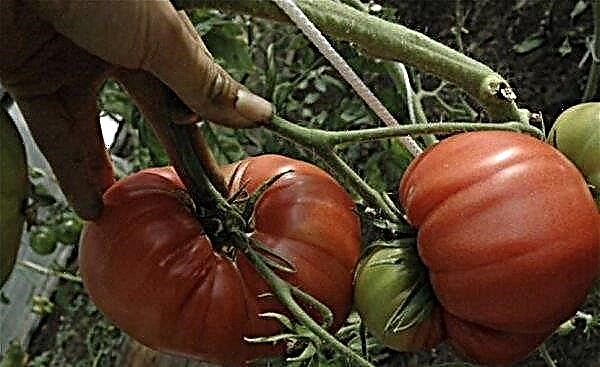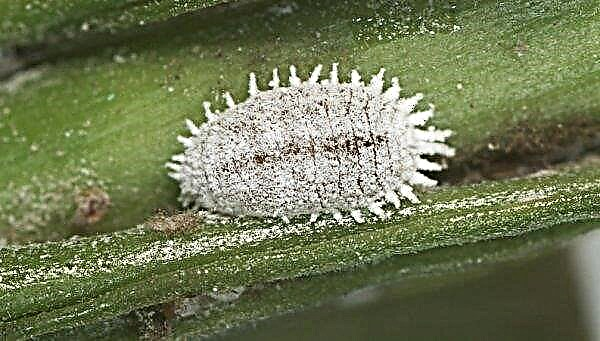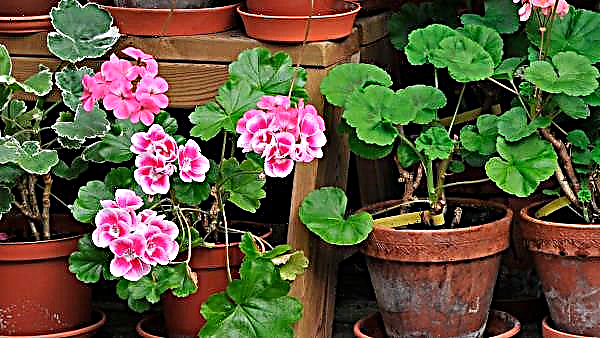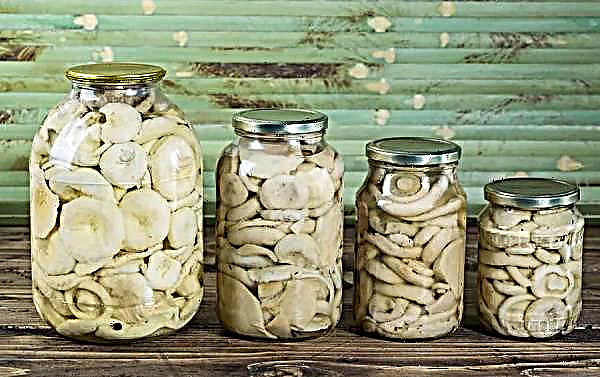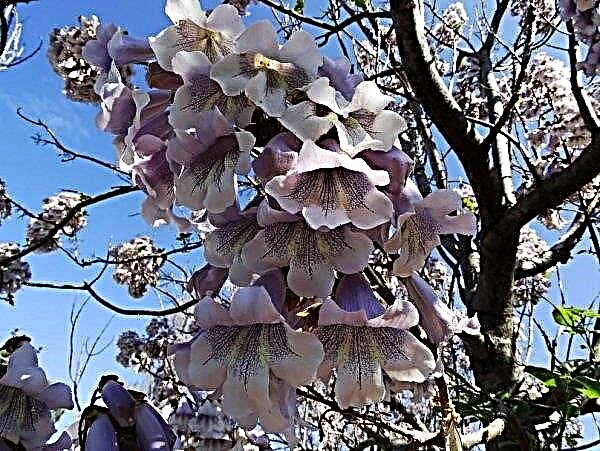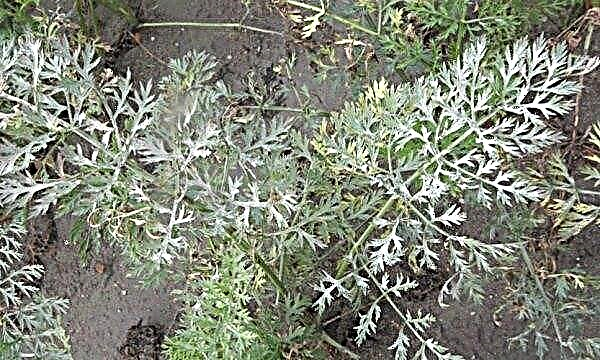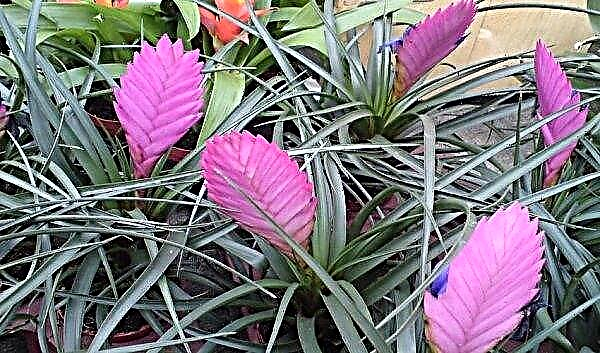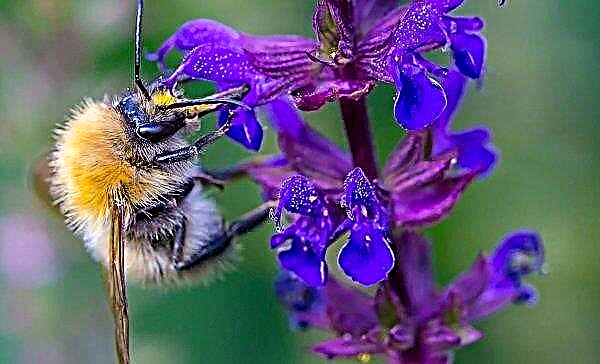Cypress or false cypress is a coniferous tree with a wide pyramidal crown. In appearance, it looks like a real cypress, since both belong to the same genus. But the first grows in cooler climates. Detailed information on how pea cypress looks and how to care for it, read further in the material.
Botanical description of the plant
Pea cypress (lat. Chamaecýparis pisífera) was first described in 1847 by Stefan Friedrich Ladislav Endlicher. The botanist noted that this is a slow-growing evergreen coniferous tree 35–50 m high. The trunk circumference of an adult plant is 2 m.
Description of cypress:
- form: high, conical;
- bark: red-brown with deep vertical furrows and fibrous texture;
- branches: flat, similar to thuja;
- needles: located in the horizontal plane, as if turning around the trunk, which gives the tree an interesting appearance; adult needles of scaly structure with pointed tips;
- color of needles: blue-green;
- seed cones: spherical, 4–8 mm in diameter, located in opposite pairs; mature in the fall 7 months after emergence;
- homeland: Japan, Honshu and Kyushu islands;
- distribution: temperate climatic zone;
- frost resistance: zones 3-5 (winter temperature from -17.8 ° C to -23.3 ° C).
Popular varieties
In the wild, cypress grows very high. But nurseries cultivate only small plants. Those that do not exceed a height of 4-5 m. Varieties with golden filament needles are especially popular. At an average growth rate, they do not exceed 2 m in height. Squarroz group varieties grow to 6 m. To give them dwarfism, they are grafted onto the Boulevard rootstock. The following is a brief description of some varieties of this plant.
Boulevard (Boulevard) is one of the most popular varieties. This is a multi-stemmed shrub of silver color. In winter, it becomes more gray and this is popular among designers. Boulevard is growing very slowly. Its annual growth does not exceed 10 cm. The height of an adult plant will be 1 m. The variety was bred in 1934 from the parent bush of Squarrosa (Squarrosa) and is represented by a nursery from Middletown (USA). The plant prefers nutrient-rich, well-irrigated soil. Needs regular pruning. It does not tolerate drought and reacts to it by the fact that its needles grow dull and the branches fall.Important! Water rate for a boulevard cypress — 400 mm over the summer. Check precipitation data in your area. Usually there are about 200 mm, the rest of the plant should be obtained by irrigation.
Characteristics:
- frost resistance zone: 4 (winter temperatures from -28.9 ° C to -34.4 ° C);
- color: blue-silver;
- shape: wide, oval;
- growth: 15-30 cm per year;
- height: 1,5-3 m.

The Baby Blue variety is considered a Boulevard mutation and also comes from Japan. It is characterized by elegant shapes and miniature sizes. The height of the adult Baby Blue will not exceed 2 m. The crown is thick and compact. The shoots are slightly raised. The needles are soft and slightly curly. It is thicker than that of the parent variety. It looks great as a separate plant and in group plantings.
Characteristic:
- winter hardiness zone: 5 (winter temperature from -23.3 ° C to -28.9 ° C);
- color: blue-green;
- shape: conical;
- size: dwarf;
- annual growth: 10 cm;
- soil: moist, nutritious;
- acidity level: 5–7 pH;
- Lighting: sunny area;
- Required: Sun shading in summer and wind protection in winter.

Cypress Cyrus Filifera came to Europe from Japan in 1861. It was brought by the famous collector Robert Fortuna and transferred to the Royal Nursery of Great Britain. The original variety is distinguished by its conical structure and hanging threadlike needles of gray-green color. After 10 years of growth, a mature plant will have a height of 1.5–2 m. Although the oldest registered representatives of Filifera had a height of 5 m. The plant belongs to strong-growing with an annual growth of up to 20 cm. Currently, up to 10 new varieties are obtained from this plant.
Important! The roots of the cypress are not too deep, but there are many. Therefore, from a botanical point of view, it should grow on the site alone, not competing with other plants.
Characteristic:
- winter hardiness zone: 5;
- Green colour;
- form: spreading, wide-pyramidal.
 Filifera Aurea is similar to the usual Filifera, but has golden yellow needles. Therefore, its synonymous name is Filifera yellow. It grows in similar conditions. It has a wide conical shape. Its shoots of filamentous drooping needles end. It becomes especially decorative in the fall, when brown cones ripen on the branches. In 10 years it reaches a height of 2 m, adding 15–20 cm in growth over the year. The first mention of this variety of cypress dates back to 1889. This was written by the journal of the Royal Horticultural Society. Probably, by that time, this mutation of the original Filifera had already appeared and spread in different nurseries.
Filifera Aurea is similar to the usual Filifera, but has golden yellow needles. Therefore, its synonymous name is Filifera yellow. It grows in similar conditions. It has a wide conical shape. Its shoots of filamentous drooping needles end. It becomes especially decorative in the fall, when brown cones ripen on the branches. In 10 years it reaches a height of 2 m, adding 15–20 cm in growth over the year. The first mention of this variety of cypress dates back to 1889. This was written by the journal of the Royal Horticultural Society. Probably, by that time, this mutation of the original Filifera had already appeared and spread in different nurseries.
Did you know? The shrub of Philifera Aurea loses its golden color in summer. His needles acquire a greener shade during this period.
Characteristic:
- winter hardiness zone: 5;
- color: yellow or gold;
- shape: conical;
- size: 1.5–3 m.

Filifera Aureovariegata (Filifera Aureovariegata) is a ball-or pillow-shaped cypress with filamentous needles. A new layer of needles, when they appear, differs in a creamy yellow hue and sets off favorably against the background of the dark green needles of previous years. The shape of the plant is close to the ball. Therefore, in spring, its yellow-green shoots look very attractive. It grows slowly, reaching a height of 1.3 m and a width of 1 m by 10 years. The variety is considered one of the oldest. Presumably, it was obtained in Germany in the late 1800s. Since then it has spread widely throughout Europe. It is popular in flower beds as an accent plant.
Characteristic:
- frost resistance zone: 4;
- color: motley, yellow-green;
- form: ball;
- height: 1.5–2 m.

Plumosa cypress is a fast-growing tall tree. In a year, it adds up to 20 cm in growth. The maximum height of the plant will leave 4–5 m, but by 10 years it will grow no more than 2 m. Plumeza has a widely pyramidal crown with a spectacular regular shape. Spreading branches, green above, lighter below. To date, many varieties of different sizes from spherical dwarf to large-sized conical have been bred from Plumoza.
Characteristic:
- winter hardiness zone: 4;
- shape: conical;
- color: dark green;
- height: up to 5 m.

Aurea (Aurea / Aurea Sawara) is a low arboreal form of cypress with bright yellow needles at the ends of branches. Toward the center, it turns green. The tree is single-stemmed and strong-growing. Its annual growth is 30 cm, so the crown in the first years of growth is shortened. By 10 years, the height will be about 2 m, and the width - 0.6 m. The tree is decorative not only with its needles, but also with a reddish bark. The variety was bred in Japan for a very long time. But he got to Europe only a couple of centuries ago.
Characteristic:
- frost resistance zone: 4 (winter temperatures from -28.9 ° C to -34.4 ° C);
- color: golden;
- shape: wide, oval;
- maximum height: 4 m.

Cream Ball is a compact dwarf spherical bush with cream-colored finely textured branches. Received in 1980 in the nurseries of Goddard Floravista (Canada). In youth, a seedling resembles a very dense ball. It is recommended to cover it from the bright sun, as it suffers from burns. It is considered one of the best varieties for rock gardens and rock gardens. In adulthood, the form becomes more spreading. At 10 years old, it will be 60 cm wide and 45 cm high.
Characteristic:
- frost resistance zone: 5 (winter temperatures from -23.3 ° C to -28.9 ° C);
- color: cream;
- form: ball;
- annual growth: 15 cm per year.

Pea cypress Fuiri-tsukomoto (Fuiri-tsukomo) differs from others in a pillow-shaped or cone-shaped and dense, awl-shaped needles, covered with white spots. This is a very decorative variety obtained in Japan relatively recently. Slow growing. Its annual growth does not exceed 3 cm, and the height in 10 years will be 30 cm, width - 50 cm.
Characteristic:
- winter hardiness zone: 5;
- color: motley, white or cream;
- size: dwarf;
- plot: sunny or partially shaded;
- soil: without special requirements;
- irrigation: moderate;
- warnings: needs shelter in winter because can be broken by a heavy mass of snow.

Cypress pea-shaped Snow (Snow) is a representative of dwarf forms. He is the owner of a mossy blue-gray needles with white tint. Needs protection from the bright sun and strong wind. Planted in the shade will grow more spreading, but less bright and attractive. After 10 years of growth, it will reach 40 cm in height. Over the year, its branches add no more than 2.5 cm.
It is believed that the variety arose a long time ago. But his first samples came to Europe only in the late 1960s. The same plant is sold in nurseries with the synonymous names of Squarrosa Snow and Mikko.Did you know? Natural form of cypress needles — dark green. All other color options — lettuce, golden, blue and even variegated obtained artificially.
Characteristic:
- winter hardiness zone: 5;
- form: pillow;
- size: dwarf;
- color: mottled cream or white.

White Pygmy is a very dwarf cypress. Its dense form with loose pale green needles in the spring becomes almost white. So that he showed his best decorative qualities, plant it in partial shade and with sufficient irrigation. After 10 years of development, it will grow to only 30 cm in height and 45 cm in width. The annual growth rate does not exceed 2.5 cm. The variety was first brought to Europe from Japan in 1967 by R. S. Corley nursery from Frensham, UK.
Characteristic:
- winter hardiness zone: 5;
- color: mottled cream;
- form: ball;
- size: mini dwarf.

Origin of name
Most cypress varieties are derived from genetic mutations. And they happened a very long time ago. People, paying attention to an interesting plant, began to propagate it. Therefore, the bulk of the names originates in external characteristics.
For example, all varieties with the word "Aurea" are likely to have yellow needles. The source of the word form will be the Latin name of gold - aurum. In some names, for the same purpose, the English version of this word is used - "gold". If you came across the words baby or dwarf, then the dwarfism of the variety was noted in this way.Did you know? Cypresses were used by the ancient Egyptians to make sarcophagi. But then the cypress was still known only in his homeland — in Japan.
By analogy, you may come across the following definitions in the title:
- blue, meaning blue needles;
- white or snow, indicating white or cream needles;

Landing
Pea-shaped cypress belongs to hardy plants and tolerates 4–5 frost resistance zones with minimum winter temperatures from -29 ° С to -35 ° С. You should not plant it in 2-3 zones, where there are frosts up to -45 ° C, as in open ground the plant may die. Shrubs with filiform leaves usually require a full sunny day. The exception is the southern regions.
Here they are planted at partial shade. If you plant such a bush in the shade, then the branches will stretch, the needles will be rare, and the color is not so golden. For plants with light needles on hot sunny days, pull on top a fabric screen from the sun or make it from other materials. This will help them avoid burns. It would be nice if the sun on the site will shine only in the morning, and after lunch it will be shaded by trees.
When to plant
Plan your landing in the spring. The weather in March better meets the needs of the plant - moderately moist soil and temperature from + 5 ° С to + 10 ° С. Active growth of needles has not yet begun and the cypress tree can fully concentrate on building up the root system.
Important! Avoid planting cypress trees in tight spaces. The roots should have enough space for expansion. They will need about 1–1.5 m, depending on the variety.
Selection and processing of the landing site
Cypress trees feel good on different types of soils, subject to good drainage. If you have sandy soil, you can mix it with clay to make it more dense. In addition, sand overheats in the summer and water quickly leaves it. Therefore, heavier soil is added to it. Most cypress trees do not put forward requirements for soil acidity.
It is enough just to dig it before landing in the selected area. But if a certain type of acidity is indicated for your variety, then you need to create it. So, by default the soil in the plot is acidic. Any plants during the development period absorb nutrients and oxidize it. To make the soil neutral or alkaline, you can apply 200–300 g / m2 to the plot. lime or dolomite flour. Gradually, it will react with the soil and you will get a site with the correct acidity.
How to plant
Pea cypress needs nutrient-rich soil. May grow in the sun or in the shade. But on a sunny site, its color will be brighter.
To plant a bush you need:
- Dig a hole three times wider than the root ball and its two heights.
- If the soil is too dense, it is diluted with compost in a ratio of 1: 1.
- At the bottom of the pit lay part of the prepared soil mixture. A plant removed from the container is installed on top.
- The remaining soil is poured and watered abundantly. During irrigation, the soil is compacted.
- Therefore, from above, you can add another part of the soil mixture.
- To reduce moisture evaporation and prevent weed growth, a layer of mulch is placed in the planting zone. It can be sawdust or other material of organic origin. The thickness of the sawdust layer is 6 cm, for dense materials such as bark - 10 cm.
Video: Cypress landing
Care
Cypress, like all conifers, is not too picky about leaving. But you still need to complete individual activities.
Plant care should consist of:
- regular irrigation;
- fertilizer application;
- disease prevention.
Important! Plants experience stress when they are watered with cold and chlorinated water. Therefore, for watering the potted forms of the kipasisovik, be sure to defend the water.
Watering and feeding
The soil should remain evenly moist. Therefore, summer watering is performed 1-2 times a week. It also should not be waterlogged. The plant can tolerate only a small drought. Therefore, irrigate if the top 5 cm are dry and you do not feel moisture on your fingers.
The plant needs fertilizer in early spring. This affects the intensity of the color of the needles and its density. A young seedling is fed with balanced fertilizer. It should contain nitrogen, phosphorus and potassium in equal proportions. For example, 10-10-10. A rooted plant requires a different proportion. So, if you do not want to set records for annual growth - buy fertilizer with a reduced nitrogen content. For example, 4-8-8. For the same reason, cypress should not be fertilized with rotted manure - it contains too much nitrogen.

Loosening and mulching
Loosening the garden is necessary for two reasons:
- weed removal;
- soil aeration.
Air in the soil is needed in order to support the development of beneficial microorganisms.at. They process those compounds that the bushes are not able to absorb on their own. For example, phosphorus in the form in which it is part of fertilizers is not absorbed. It needs to be processed and this requires soil bacteria.
On average, of the amount of phosphorus that you contributed this year, the plant will consume only 15% in the same period. As for weeds, they compete with cultivated plants for nutrients and moisture. To eliminate this competition, weeds must be removed.
Loosen the earth a day after watering. But if a layer of mulch is located in the basal zone, then this is not necessary. It does not allow the soil to condense, prevents the growth of weeds and the evaporation of moisture. Choose organic mulch for coniferous crops: wood chips, chopped straw or sawdust. Under the influence of irrigation water, it will be compacted and crushed. She will have to be added monthly. And after six months to replace. Under the influence of moisture, mulch gives off the nutrients that it contains in the soil. And after a while it still performs its main function, but no longer feeds the bush.
Pruning
Shrubs do not recommend pruning unless absolutely necessary. They tolerate pruning poorly and recover slowly. But woody varieties, such as Boulevard, lend themselves well to shearing. It can be shaped, but it must be done in the first years after planting, and then just maintain it, annually removing those branches that deform the given shape.
Video: Mowing a cypress
Also, any plant periodically requires a sanitary haircut - the removal of dry branches. They are cut neatly at an angle of 90 degrees to the trunk. Avoid breaking them, as this can lead to illness and damage to the rest of the bush. Dry branches are pruned when they are discovered, without reference to the timing. Pinching is also used for cypress. This is necessary for branching. Some shoots may be unevenly landscaped. Pinching stimulates the growth of "sleeping" kidneys and helps restore needles.
Important! Never remove more than 1/3 of the green mass from a plant. This may cause him to die.
Possible diseases and pests
All cypresses being healthy and growing on fertile soil are ill little. The most common cause of illness is excess moisture. Therefore, the gardener must adhere to the rules of irrigation. If necessary, when planting, lay a drainage layer up to 20 cm thick on the bottom of the pit. It minimizes contact of the roots with water.
The main problems and their solutions:
| Problem | Decision |
| Needles on the lower branches fall | This is not a disease, but a property of a plant. It is impossible to prevent. Such branches are simply pruned. |
| The needles turn brown | This is a lack of moisture. A decrease in humidity in the hot summer months sometimes leads to the needles becoming brown. Just water abundantly. |
| Needles turn yellow | This is a weevil. Adults are brown beetles with long snouts. Their larvae are in the soil. Spray the tree and soil with Kinmix (2.5 ml per bucket of water) or Decis in the same proportion of working solution. |
| Yellow or creamy scales on the branches | This is a scale shield. Wipe the stem with a cotton pad dipped in kerosene. No less effective is the use of oil sprays. |
| Sticky web on needles | Spider mite. Treat with Fitoferm, Actellic, Zolon, or another drug. |

The use of wood in landscape design
A cypress tree is considered one of the best coniferous shrubs in landscape design. But, if you do not make mistakes. So, beginners often do not take into account the final size that the plant will reach. So start by choosing dwarf or undersized options. They can be planted in front of the building. But be sure to remember the relationship between different varieties with the sun.
When growing in a room for the formation of an equilateral crown, it is recommended that the cypress be rotated monthly by 5-10 degrees around its axis. The plant can act as an accent element on the flower bed. But do not plant other crops too close. Also, the cypress will look good in the rock garden or the classic versions of the Japanese garden.
Evergreen conifers retain their beauty all year round. Therefore, they are great for ennoblement of the house area, planting in parks and squares. With the right arrangement, cypress bushes will provide protection for other plants from wind and snow. And also can become for them protection from the bright summer sun. Choosing the desired varieties, you can always balance your aesthetic views with the practical needs of your site.

